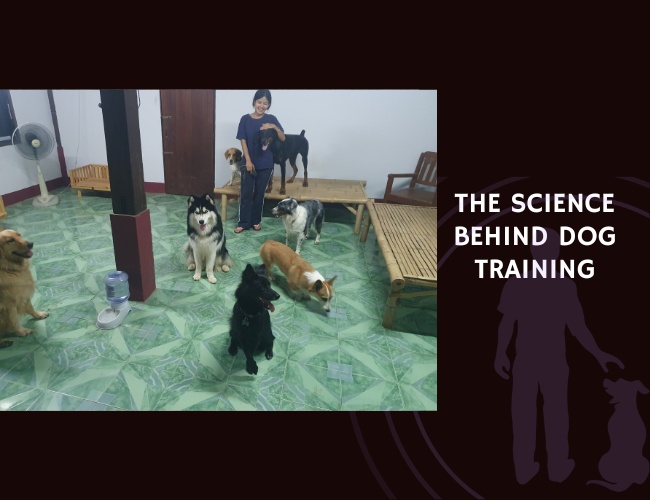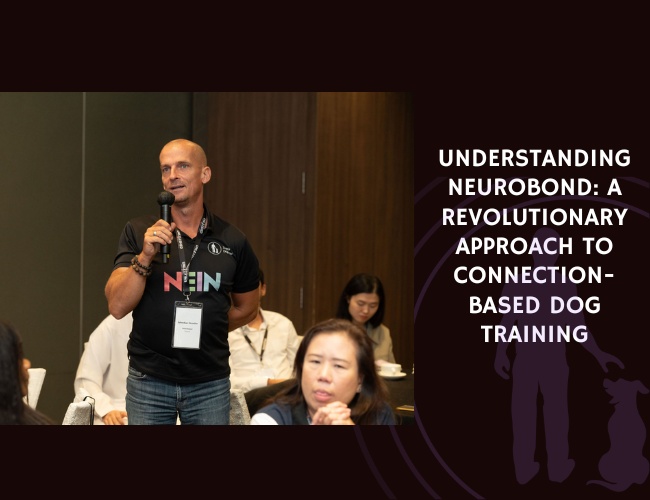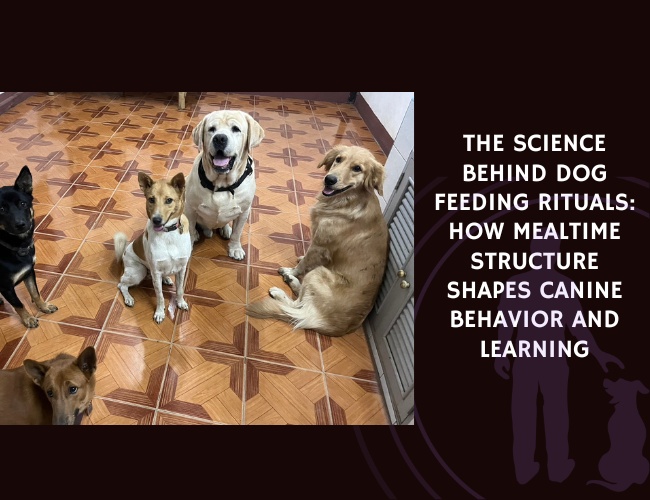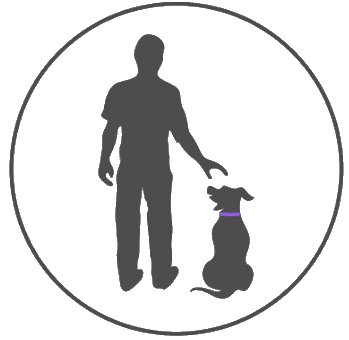Introduction to Dog Training Methods
Overview of Primary Training Approaches: Positive Reinforcement and Aversive Methods
Dog training has long utilized a variety of techniques to mold behavior, but two primary methodologies stand out: positive reinforcement and aversive methods. Positive reinforcement focuses on rewarding desired behaviors, thereby increasing the likelihood of those behaviors being repeated. Common rewards include treats, praise, or playtime. This method is grounded in the fundamental principles of operant conditioning, proposed by B.F. Skinner in the 1930s. By providing a gratifying stimulus immediately following a specific action, the behavior becomes associated with a positive outcome.
On the other hand, aversive methods, also known as punishment-based training, aim to deter undesirable behaviors through negative consequences. These can range from physical corrections, like leash pops or the use of e-collars, to verbal reprimands. Aversive techniques are predicated on the idea that introducing discomfort or an unpleasant experience will decrease the frequency of undesirable behavior. However, aversive methods have been the subject of extensive debate due to potential ethical concerns and adverse effects on dogs’ well-being.
Historical Evolution of Dog Training Techniques
The evolution of dog training techniques mirrors broader societal changes and advancements in the understanding of animal behavior. Historically, the earliest training methods predominantly employed aversive techniques, often for their perceived efficiency and immediacy. During the 20th century, militaries, police forces, and professional trainers commonly relied on punitive methods to achieve quick obedience.
The mid-20th century introduced a shift towards more humane training practices, influenced by the growing field of animal psychology. The publication of “The Culture Clash” by Jean Donaldson in 1996 and the works of Dr. Ian Dunbar brought positive reinforcement into mainstream awareness. These contributions highlighted the ethical and practical benefits of reward-based training, fostering a gradual yet significant move away from aversive methods.
Importance of Understanding Cognitive Development in Training
Understanding cognitive development in dogs is paramount to effective training. Cognitive development pertains to how dogs learn, process information, and solve problems. Recent research indicates that dogs, like humans, experience cognitive development stages; these can be influenced by the type of training they receive.
Positive reinforcement not only encourages desirable behavior but also promotes cognitive flexibility. By motivating dogs to engage in problem-solving and decision-making, it can enhance their cognitive capabilities and adaptability in novel situations. Conversely, aversive methods can impair cognitive processes by inducing fear and anxiety, which can impede learning and concentration abilities.
Moreover, cognitive development is integral to a dog’s emotional well-being. Training that considers cognitive growth leads to more balanced and resilient dogs, capable of forming strong social bonds and exhibiting less stress-related behavior. Trainers who understand the nuances of cognitive development can create more enriching and effective programs tailored to individual dogs’ needs, ultimately leading to more harmonious human-dog relationships.
As we delve deeper into the correlation between cognitive development and different training methods, we will explore the significant impact of positive reinforcement on problem-solving abilities and emotional well-being, setting the stage for a more comprehensive understanding of dog training’s multifaceted aspects.
Positive Reinforcement and Cognitive Development
Research Findings on Reward-Based Training and Problem-Solving Abilities
Positive reinforcement training, rooted in the principles of operant conditioning, involves rewarding dogs for desirable behaviors, thereby encouraging the repetition of these behaviors. Research has consistently shown that reward-based training significantly enhances problem-solving abilities in dogs. In studies, dogs that were trained using rewards, such as treats or praise, demonstrated higher success rates in completing complex tasks compared to those trained using aversive methods. These dogs were also quicker to adapt to new challenges, showcasing improved cognitive flexibility.
Impact on Cognitive Flexibility and Emotional Well-Being
Cognitive flexibility refers to the ability to adjust thinking or behavior in response to changing environments and demands. Reward-based training fosters this flexibility by creating an environment where dogs are motivated to explore and experiment with different behaviors, knowing that positive outcomes are likely. This encouragement of exploration and learning not only enhances cognitive flexibility but also positively impacts the dog’s emotional well-being.
Dogs trained with positive reinforcement tend to display fewer signs of fear and anxiety. They approach training sessions with enthusiasm and a willingness to learn, which fosters a more positive association with training activities. This positive emotional state contributes to an overall improved quality of life for the dog, as they are more likely to engage in training and interaction without the stress or apprehension that can accompany punishment-based methods.
Relationship Between Positive Reinforcement and Optimistic Behavioral Outcomes
Optimistic behavior in dogs often manifests as an eagerness to engage with their environment, a willingness to take on new challenges, and a general enthusiasm for interactions with humans and other dogs. Positive reinforcement plays a crucial role in nurturing these optimistic behavioral outcomes. Dogs trained using reward-based methods tend to develop a “can-do” attitude, as they learn that their actions can lead to positive rewards. This sense of agency and control fosters an optimistic outlook, reinforcing a cycle of positive behavior and rewarding experiences.
Interestingly, the optimistic behavioral outcomes are not solely confined to training sessions. Dogs that are consistently trained with positive reinforcement carry these attitudes into other areas of their lives. They are more likely to approach unfamiliar situations with curiosity rather than fear, engage socially with other dogs and people, and exhibit behaviors that are reflective of a well-adjusted and confident canine.
Understanding the benefits of positive reinforcement on cognitive development and emotional well-being underscores the importance of employing these methods in training. By fostering an environment of encouragement and rewards, dogs are more likely to develop robust cognitive skills and emotional resilience.
Continuing this exploration, the next logical step is to examine the effects of aversive training methods, providing a comprehensive understanding of the various training approaches and their impacts on cognitive development and behavior. The following chapter will delve into this topic, offering insights into the scientific evidence surrounding aversive training and its long-term consequences.
Understanding Aversive Training Effects
Scientific Evidence of Cognitive Impairment from Aversive Methods
Aversive training methods, which include techniques such as punishment-based corrections, shock collars, and harsh verbal reprimands, have been widely used in dog training. However, scientific research has increasingly shown that these methods negatively impact the cognitive development of dogs. Studies have revealed that dogs exposed to aversive training methods exhibit signs of cognitive impairment, including reduced problem-solving abilities and inhibited learning.
One key area of concern is the impact on a dog’s executive functions. Executive functions are cognitive processes that allow for planning, focus, remembering instructions, and juggling multiple tasks. Aversive methods can severely impede the development of these functions. For example, dogs subjected to shock collar training might exhibit heightened fear responses, which can hinder their ability to focus and learn new tasks effectively.
Stress and Anxiety Impacts on Learning Capabilities
Stress and anxiety are common consequences of aversive training techniques. When dogs experience high levels of stress, their bodies release cortisol, the stress hormone, which can adversely affect their brain function. Elevated cortisol levels impair the hippocampus, the region of the brain involved in learning and memory. This means that stressed dogs often find it challenging to retain information and apply learned behaviors.
The stress induced by aversive training does not only affect dogs temporarily; its impacts can be seen in long-term behavioral changes. Dogs trained with harsh methods may develop a general anxiety disorder, becoming more reactive and displaying heightened sensitivity to everyday stimuli. Chronic anxiety can diminish a dog’s learning capabilities, making them slow to respond to new training efforts and reducing their overall cognitive performance.
Long-Term Consequences on Dog Behavior and Mental Health
The long-term consequences of using aversive training methods extend beyond cognitive functions and learning capabilities. Dogs subjected to these techniques often display a range of problematic behaviors rooted in fear and anxiety. These can include aggression, destructive chewing, excessive barking, and avoidance behaviors. Such behavioral issues are not just frustrating for owners but also indicate significant mental health distress in the dogs.
Moreover, the mental health impacts of aversive training can be deeply entrenched. Dogs that have experienced high levels of stress and fear during training may develop a generalized sense of unease and a lack of trust in humans. This erosion of trust is detrimental to the dog-owner relationship and can make future training and positive interactions more challenging.
The emergence of such long-term issues underscores the ethical and practical concerns surrounding aversive training methods. It is evident that the negative impacts extend far beyond immediate behavior correction and can compromise the well-being and quality of life of the dogs.
The next step in understanding training methodologies involves exploring how effective training can develop essential cognitive functions in dogs. This exploration will help to understand the broader implications of training on a dog’s executive function and overall cognitive skills.
Executive Functions and Training
Development of Working Memory Through Training Exercises
Working memory, the ability to hold and manipulate information over short periods, is crucial for dogs to perform complex tasks and learn new behaviors. In dog training, exercises designed to enhance working memory play a significant role in cognitive development. For example, teaching a dog to follow a sequence of commands, such as “sit,” “stay,” then “come,” requires the dog to remember and process each command in the correct order. These types of training exercises strengthen the dog’s working memory, enhancing their ability to learn and perform complex tasks.
Another effective exercise involves using a treat as a reward after the dog successfully completes a series of commands or tasks. By gradually increasing the complexity and length of the task sequences before providing the reward, trainers can progressively challenge and thereby enhance the dog’s working memory.
Role of Training in Enhancing Inhibitory Control
Training can also play a pivotal role in enhancing inhibitory control, which is the ability to control impulses and delay gratification. This executive function is essential for dogs to regulate their behavior and respond appropriately to commands in various situations. Activities that require dogs to wait or stay focused amidst distractions are particularly beneficial.
For instance, training a dog to “leave it” when tempted by a treat or toy helps build their inhibitory control. In this exercise, the dog learns to suppress the immediate impulse to grab the treat or toy and instead wait for the trainer’s permission. Similarly, training routines that involve stopping and starting, such as agility courses or fetch games, can further develop inhibitory control by requiring the dog to exhibit patience and control over their actions.
Measuring Cognitive Skills Using the Dog Executive Function Scale (DEFS)
To assess cognitive skills and track progress in executive functions like working memory and inhibitory control, researchers and trainers often use standardized tools such as the Dog Executive Function Scale (DEFS). The DEFS evaluates various cognitive abilities, including decision-making, problem-solving, working memory, and inhibitory control, through a series of structured tasks and observations.
The DEFS consists of tasks designed to challenge the dog’s cognitive processes. For example, one task may involve hidden treats that the dog must find by solving a puzzle, testing both their problem-solving abilities and working memory. Another task could involve distractions or tasks requiring delayed responses, allowing evaluators to measure the dog’s inhibitory control.
By employing the DEFS, trainers can quantitatively measure the impact of their training methods on a dog’s cognitive development. This tool also helps identify areas where a dog may need additional support or different training approaches to enhance their executive functions effectively.
Understanding these components of dog cognition emphasizes the importance of structured training exercises tailored to develop working memory and inhibitory control. Utilizing tools like the DEFS provides valuable insights into the effectiveness of these training exercises, allowing trainers to make informed adjustments to optimize their training strategies.
Enhancing a dog’s cognitive abilities through targeted training not only improves their behavior and performance but also contributes to their overall mental health and quality of life. As trainers and researchers continue to explore innovative training methods, the focus on cognitive development will likely yield even more effective strategies tailored to meet the individual needs of each dog.
Human-Dog Interaction in Training
Importance of Trainer-Dog Relationship Quality
The quality of the relationship between a trainer and a dog is fundamental in achieving successful training outcomes. A strong bond enhances trust and communication, ensuring that the dog feels secure and understood. This trusting relationship encourages the dog to engage more readily in training activities, facilitating quicker learning and retention of commands.
To establish this bond, trainers should focus on consistency, patience, and positive interactions. Consistent behavior from the trainer helps the dog understand expectations and reduces anxiety. Patience ensures that the dog is given the time needed to comprehend new tasks and skills, which reinforces their trust in the trainer. Positive interactions, such as praise and rewards, build a positive association with the trainer, making the dog eager to participate.
Role of Emotional Engagement in Cognitive Development
Emotional engagement is crucial in reinforcing and enhancing the cognitive development of dogs. Positive emotional experiences during training can stimulate a dog’s brain in beneficial ways, promoting engagement and interest in learning. When a dog is emotionally connected to the training process, they are more likely to show enthusiasm and responsiveness.
Emotionally engaging training methods include:
- Using a high level of verbal praise and physical affection.
- Incorporating fun and stimulating activities.
- Providing rewards that the dog finds highly motivating.
These methods not only make training more enjoyable for the dog but also stimulate cognitive processes by making learning a more rewarding experience. Emotional engagement helps to strengthen the neural pathways involved in memory and learning, thereby enhancing cognitive development.
Impact of Social Learning on Training Outcomes
Social learning, where a dog learns by observing and mimicking the behavior of others, is a powerful mechanism in dog training. Dogs are social animals and have evolved to learn from their environment, including their human and canine companions. When trainers model desired behaviors or use well-trained dogs as examples, other dogs can learn by observation.
This approach to training leverages the natural social inclinations of dogs, making learning more intuitive and effective. For example, a dog observing another dog being rewarded for performing a specific command can motivate the observing dog to imitate that behavior to receive a reward. This form of learning can accelerate the training process and can be particularly useful in group training sessions.
Social learning also supports cognitive development by encouraging dogs to engage in problem-solving and imitation, which are complex cognitive processes. When dogs understand that their actions are influenced by their surroundings and the behaviors of others, they develop a better grasp of cause and effect, enhancing their overall cognitive abilities.
The symbiotic relationship between dogs and humans is a critical element in training, fostering environments where dogs can thrive both emotionally and cognitively. The quality of interaction, the level of emotional engagement, and the incorporation of social learning play significant roles in the effectiveness of training methods, ultimately leading to well-behaved and mentally stimulated dogs.
Next, we will explore practical applications and emerging research in dog cognition and training methods.
Practical Applications and Future Directions
Implementation Strategies for Cognitive-Focused Training
Training methods grounded in cognitive development focus on enhancing a dog’s mental agility alongside obedience. These strategies often leverage the principles of positive reinforcement to bolster cognitive abilities and emotional well-being. Implementing these strategies involves incorporating various exercises that stimulate the dog’s brain, encouraging problem-solving and critical thinking.
Interactive Training Techniques
Interactive training techniques include activities that require dogs to engage their cognitive faculties to succeed. These exercises may encompass:
- Puzzle Toys: Toys that dispense treats when manipulated correctly encourage dogs to solve problems and think critically.
- Scent Work: Encouraging dogs to use their sense of smell to locate objects helps in developing cognitive mapping and memory.
- Clicker Training: Utilizing a clicker to mark desired behaviors creates a clear communication channel, reinforcing learning through consistent feedback.
Consistency and Patience
Consistency and patience are crucial elements in cognitive-focused training. Regular training sessions with predictable routines help dogs understand and internalize learning better. Trainers should approach each session with patience, allowing dogs ample time to grasp new concepts without resorting to pressure or aversive methods.

Emerging Research in Dog Cognition and Training Methods
Recent studies in canine cognition provide valuable insights into effective training methodologies. Innovations in our understanding of dog behavior and mental processes have led to the development of more refined training techniques aimed at enhancing cognitive function.
Neuroscience and Behavior
Research in neuroscience has uncovered links between specific training methods and brain plasticity in dogs. Positive reinforcement techniques have been shown to stimulate neural pathways associated with learning and memory, leading to long-lasting effects on cognitive abilities. These insights emphasize the significance of reward-based training in promoting mental well-being.
Technology-Assisted Training
Advancements in technology are transforming dog training practices. Interactive devices and apps designed for canine engagement offer new avenues for stimulating a dog’s mind. For example:
- Activity Monitors: Devices that track a dog’s physical and mental activity can help trainers customize regimens to meet individual needs.
- Virtual Training Programs: Online platforms provide access to expert guidance and interactive training modules, enabling remote learning opportunities for dog owners.
Recommendations for Optimal Cognitive Development Through Training
To optimize cognitive development, trainers and dog owners should adopt a holistic approach that combines physical, mental, and emotional stimulation. Here are some recommendations for effective training practices:
Encourage Play and Exploration
Play is a natural way for dogs to develop their cognitive skills. Encouraging exploratory behaviors and providing varied environments help stimulate a dog’s curiosity and problem-solving abilities. Structured play sessions can improve both mental and physical health.
Incorporate Training into Daily Routines
Integrating training exercises into daily routines ensures consistent cognitive engagement. Simple activities, such as asking a dog to perform tricks before meals or during walks, keep their minds active and responsive.
Prioritize Emotional Well-Being
A dog’s emotional state significantly impacts its ability to learn. Maintaining a positive and supportive training environment fosters emotional stability, which in turn enhances cognitive function. Building a strong bond with the dog through positive interactions and affection is crucial for emotional well-being.
By implementing these strategies and staying informed on emerging research, trainers and dog owners can foster a nurturing environment that supports optimal cognitive development. This approach not only enhances training outcomes but also promotes a happier, healthier life for dogs.









